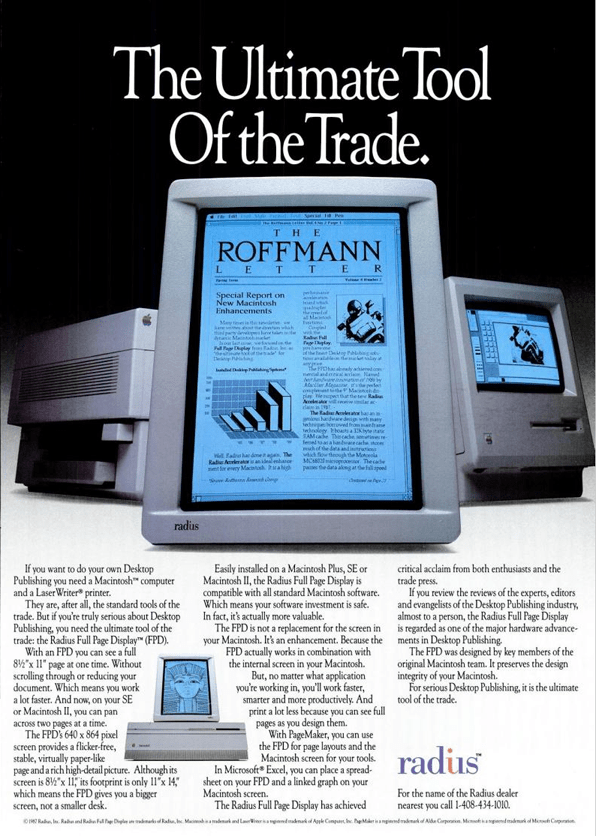Before the Thunderbolt Display Apple manufactured a monitor for desktop publishers on the Mac

Marketed as “The ultimate tool of the trade”, the portrait-oriented 1988 Radius Full Page Display was the precursor to Apple’s own Macintosh Portrait Display, released in 1989.
The monitor, inspired by the work of Macintosh alumni-founded startup Radius, supported a native resolution of 640 by 870 pixels, with a density of 80 pixels per inch.
By today’s standards, the Apple device’s display with the least pixels per inch is the Apple Watch, which is capable of 325 ppi, which has about four times the resolution of the Macintosh Portrait Display.
The odd aspect ratio was consistent with Apple’s focus on creative users, particularly in the desktop publishing sector.
In 1989, desktop publishing boomed as Adobe announced the very first version of Illustrator, and a portrait oriented display was thought as a hit, as more professionals began discovering Adobe’s brand new design software.
The great selling point of displays such as the Macintosh Portrait Display and the Radius, was that they could open a full letter-sized document, without scrolling or scaling. Best of all, the unit was actually 13.1 inches by 11.5 inches, which was as close as it could get to letter-size.
If there is anything Apple knows too well after 40 years is that innovation doesn’t come without quirks, and the Macintosh Portrait Display had its fair share.
The display shipped with a manual that clearly stated potential glitches due to “environmental influences”, including copy machines, coffee makers, other computer monitors, electronic appliances, fluorescent lights, and, why not, any file cabinet, bookshelf or desk made of metal.
Anyone of the above elements listed could result in symptoms ranging from distorted image, to movement, or jitters.
While in the late 80s, a portrait display was merely a novelty with limited applications, today the benefit of a portrait aspect ratio in modern displays is rather obvious, considering the standard way we use smartphones and tablets. In addition, nearly all desktop PC displays support 90 degrees rotation, whether it is via software, or mechanically built-in.The MPD retailed originally at $1049, but its current price for collectors could be higher than the typical vintage Macintosh display due to its rare status.
Ready to shop?
If you are looking for the perfect Apple desktop, PortableOne has the best deals on the latest Apple iMac Retina.